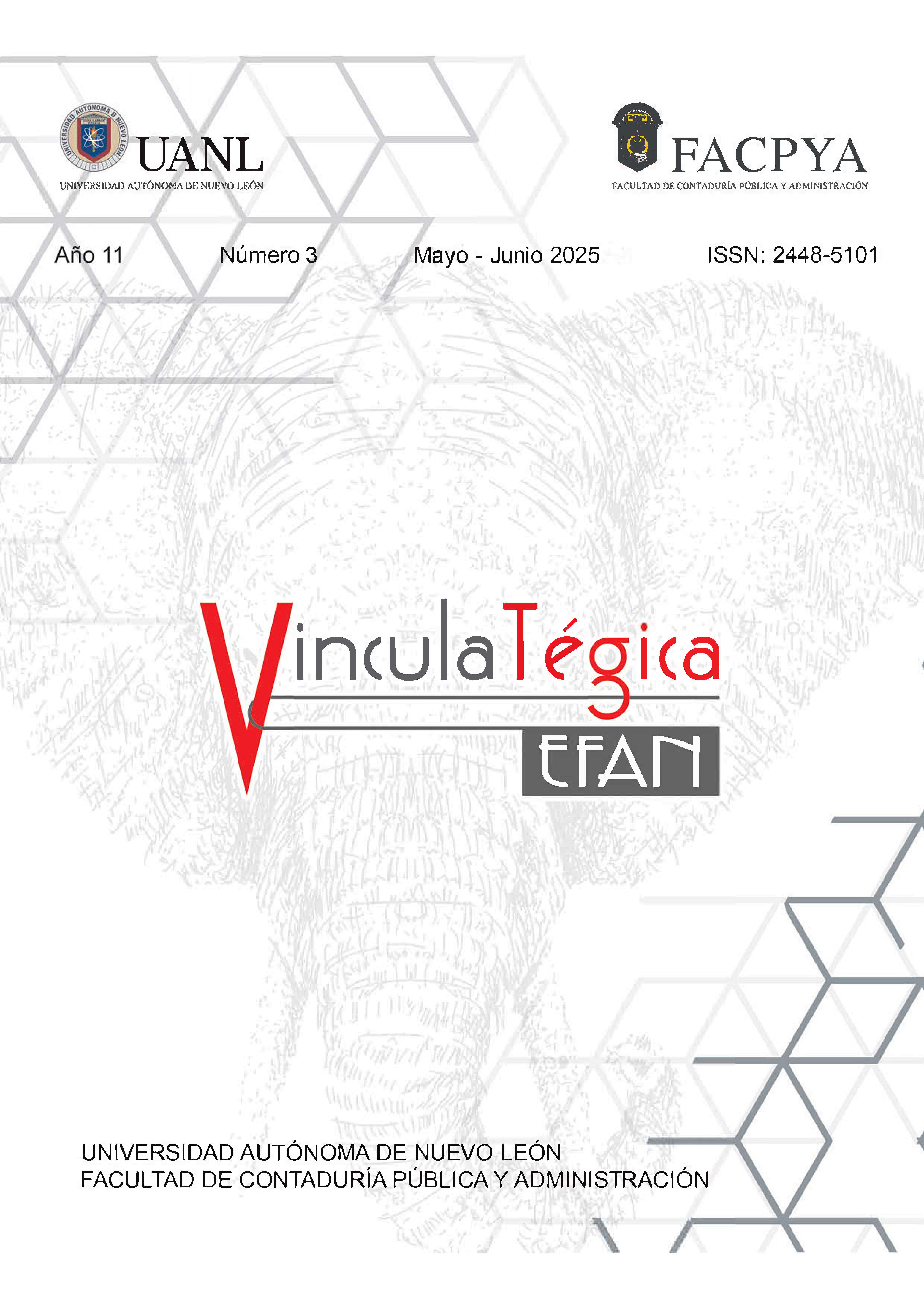Validation of the “Unified Theory of Acceptance and Use of Technology” (UTAUT) Model in the adoption of NEXUS 7 in FACPYA students
DOI:
https://doi.org/10.29105/vtga11.3-1045Keywords:
UTAUT NEXUS Students expectationsAbstract
The objective of this exploratory research work is to validate the model of the Unified Theory of Acceptance and Use of Technology UTAUT in the adoption of the NEXUS 7 tool in students of the Faculty of Public Accounting and Administration. The case method was used. study with an exploratory approach that enables understanding of the phenomenon in its context, as well as interaction with students. In this way, the statements of each construct will be evaluated for each variable in the model; Full satisfaction of the variables will predict a positive decision to adopt the NEXUS 7 Tool by FACPYA students. The UTAUT instrument was applied in five sessions to 380 young students from different careers, 44% are male and 56% are male. They are female, all of legal age from different semesters and different majors, obtained a Cronbach's Alpha of 0.864 in the five sections. Comparisons of means were made between the variables (Expectation of Functioning, Expectation of Effort, Social Influence and Facilitating Conditions), showing interesting results since Nexus7 being a common practice tool among students, they adopted it perfectly in its use and application.
Downloads
References
Alegre Ortiz, J. ., Cuevas Gutiérrez, A. I. ., & Mendoza Vargas, M. M. . (2021). Aceptación y uso de la tecnología en profesores universitarios. Vinculatégica EFAN, 7(2), 84–93. https://doi.org/10.29105/vtga7.1-86 DOI: https://doi.org/10.29105/vtga7.1-86
Al-Gahtani, S. S. (2016). Empirical investigation of e-learning acceptance and assimilation: A structural equation model. Journal of Applied Sciences, 6(5), 1003-1013.
Cavazos-Salazar, R., Fraire-Santiesteban, G., & Suárez-Escalona, R. (2023). Transformación digital de la UANL: implementación de la estrategia digital. Revista Ciencia UANL, 24(109), 18–21. Recuperado a partir de https://cienciauanl.uanl.mx/ojs/index.php/revista/article/view/234
Chiu, C. M., Hsu, M. H., & Wang, E. T. (2005). Understanding knowledge sharing in virtual communities: An integration of social capital and social cognitive theories. Decision Support Systems, 42(3), 1872-1888. DOI: https://doi.org/10.1016/j.dss.2006.04.001
Deng, L., Peng, W., Song, H., & Xu, L. (2019). Mobile Learning and Performance in Education: A Meta-Analysis. Computers & Education, 128, 42-53
Kim, S. S., & Malhotra, N. K. (2005). A Longitudinal Model of Continued IS Use: An Integrative View of Four Mechanisms Underlying Postadoption Phenomena. Management Science, 51(5), 741-755. DOI: https://doi.org/10.1287/mnsc.1040.0326
Liu, S. H., Liao, H. L., & Pratt, J. A. (2010). Impact of Media Richness and Flow on E-commerce Users' Perceived Satisfaction. Decision Support Systems, 48(2), 407-418
PDI 2022. Plan de Desarrollo Institucional UANL 2022-2030. Recuperado de: https://www.uanl.mx/wp-content/uploads/2022/11/plan-de-desarrollo-institucional-uanl-2022-2030-1.pdf
Straub, E. T. 2009. Understanding Technology Adoption: Theory and Future Directions for Informal Learning. Review of Educational Research 79(2): 625– 649. DOI: https://doi.org/10.3102/0034654308325896
Teo, T. (2011). Factors influencing teachers' intention to use technology: Model development and test. Computers & Education, 57(4), 2432-2440. DOI: https://doi.org/10.1016/j.compedu.2011.06.008
Venkatesh, V., & Bala, H. (2008). Technology acceptance model 3 and a research agenda on interventions. Decision sciences, 39(2), 273-315. DOI: https://doi.org/10.1111/j.1540-5915.2008.00192.x
Venkatesh, V., Morris, M. G., Davis, G. B., & Davis, F. D. (2003). User acceptance of information technology: Toward a unified view. MIS Quarterly, 27(3), 425-478. DOI: https://doi.org/10.2307/30036540
Wang, Y., Wang, Y., & Tsai, C. C. (2020). Investigating the relationships among perceived usefulness, perceived ease of use, usage intention, and actual usage of e-learning courses. Interactive Learning Environments, 28(4), 469-482.
Wu, J. H., Tennyson, R. D., & Hsia, T. L. (2011). A study of student satisfaction in a blended e-learning system environment. Computers & Education, 57(4), 1414-1424.
Downloads
Published
How to Cite
Issue
Section
License
Copyright (c) 2025 KATIA SITE PEREZ MARTINEZ, JUAN ENRIQUE SALDAÑA PEREZ, ERIK TEODULO CAVAZOS CAVAZOS

This work is licensed under a Creative Commons Attribution 4.0 International License.
a). Authors keep copyright and give the journal the right of the first publication of the work under a Creative Commons attribution license. This license allows others to share the work as long as original authorship and initial publication in this journal is acknowledged.
b). Authors may make other independent and additional contractual agreements for the non-exclusive distribution of the version of the article published in this journal (e.g., include it in an institutional repository or publish it in a book) as long as they clearly indicate that the work was published for the first time in this journal.







